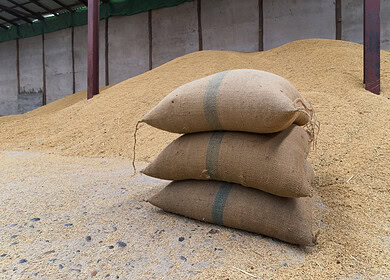Japan’s rice industry faces challenges amid shortages and rising costs

Japan’s rice industry faces persistent challenges as shortages continue to raise concerns about the sector’s future despite government assurances. The Ministry of Agriculture, Forestry, and Fisheries claims that the supply-demand balance remains stable, yet doubts persist regarding the adequacy of rice stock.
Niigata, a leading rice-producing region in Japan, is at the center of these challenges. Abnormal weather patterns have adversely affected crop yields, with last year’s extreme heat diminishing rice quality and driving up prices. Additionally, the influx of foreign tourists has intensified demand, with many drawn to the affordable and diverse rice ball offerings found throughout the region.
Mētele Announcer Hana Komatsuzaki reports a significant presence of international customers at local eateries, noting, “The rice is so fluffy it barely holds together.” Eiji Kimoto, Managing Director of Togoshiya Shibuya Dogenzaka Store, indicates that the rising costs of rice and seaweed have forced the business to implement price hikes, with another increase likely this autumn.
Despite visible shortages, the Ministry insists on a balanced market. However, a visit to the JA Echigo Joetsu warehouse in Niigata reveals ample stocks from the 2023 harvest still in storage. Kenji Iwasaki, Executive Director at JA Echigo Joetsu, supports the Ministry’s stance, urging a calm approach amidst circulating rumors of depleted stocks.
The upcoming rice harvest brings a mix of optimism and concern. Veteran rice farmer Takeo Takimoto anticipates a better yield due to favorable weather and water supply but worries about the rising costs of essential inputs like fertilizer and fuel. The industry faces additional pressures from labor shortages and the need for government intervention to ensure fair pricing and sustainable wages for farmers.
As Japan prepares for the new harvest, the rice industry remains a critical but strained sector, with stakeholders calling for comprehensive measures to address both immediate shortages and long-term sustainability challenges.
Enjoyed this story?
Every Monday, our subscribers get their hands on a digest of the most trending agriculture news. You can join them too!














Discussion0 comments